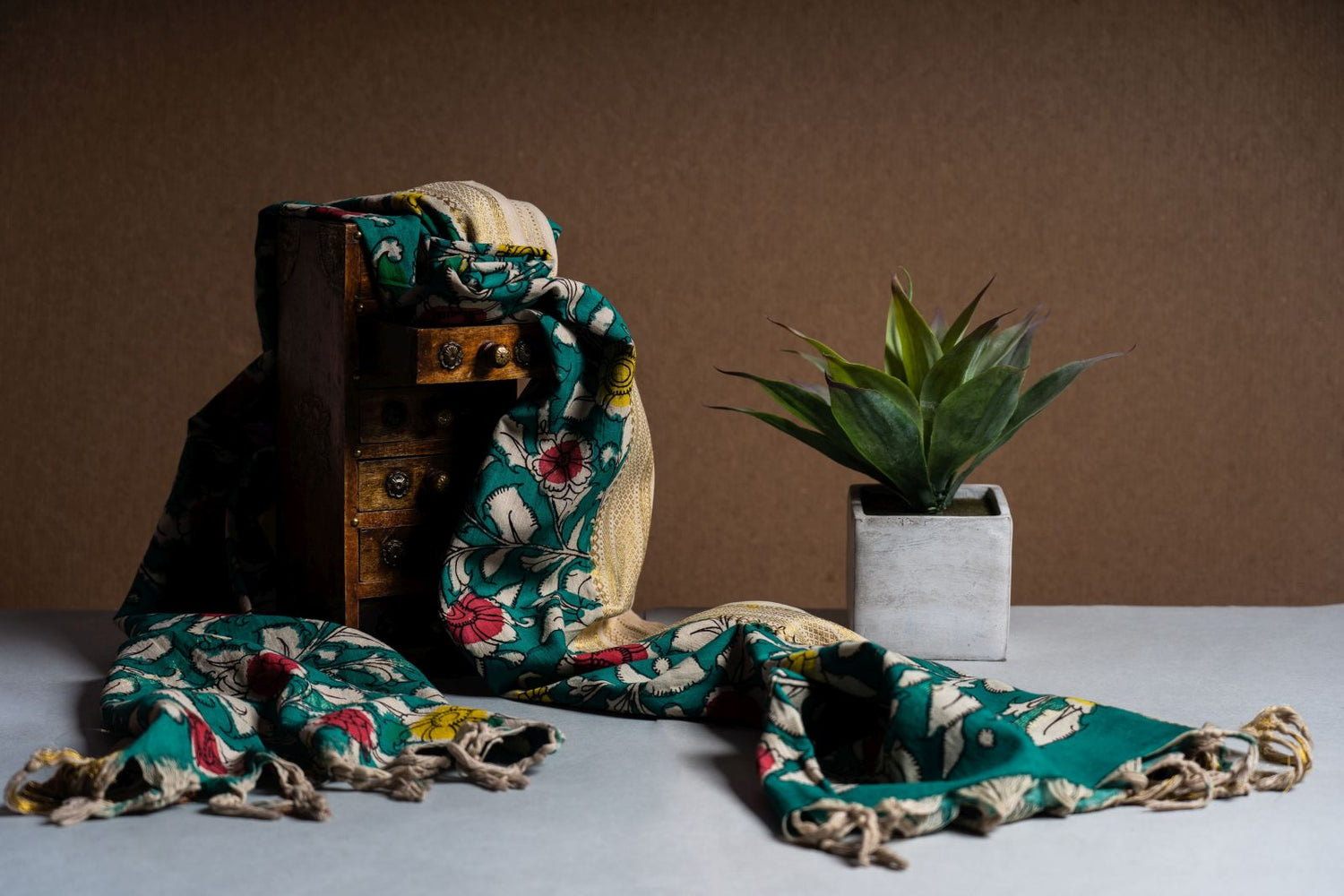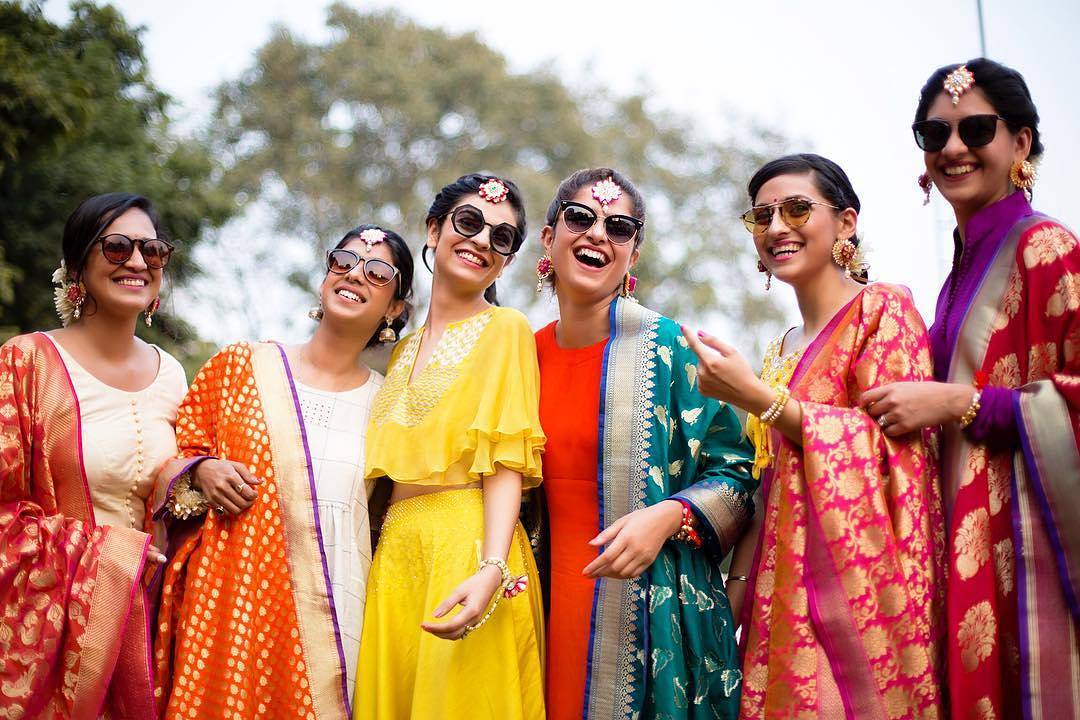Authored By: Mugdha Bansal
Once upon a time, not too long ago, in Pedana, a small town in the Krishna district of the southern state of Andhra Pradesh, a group of artisans and craftsmen started to reminisce the arts developed by the Mughals and practised by the Golconda Sultanate, blowing new life into what is now known as the Machilipatnam Kalamkari.
A traditional Indian Handloom textile, the Machilipatnam Kalamkari is identified as adorned with motifs, hand-printed using blocks, hand-carved with elaborate designs in wood, filled in with vegetable dyes on the chosen material. Having used alum to fix the colors on the cloth, their steadfastness is further assured by washing, bleaching and sunning the prepped fabric.

Once a combination of colors is applied, wax is used as a resistant to embellish different parts of the design. This design is then hand-printed onto the fabric with a “Kalam”, or pen, made out of a bamboo stick having an iron loop attached to it. After removing the wax by boiling, first, the indigo is applied, followed by other colors, detailed using a brush.


This fabric, requiring to be washed in running water, may take several days or even months to dry, depending on its length. But it turns out that just getting enough water to do this, is a ginormous struggle for the artisans. Team Fabriclore set out to discover, first-hand, how the artisans are managing to keep the craft alive.

Our team of textile designers visited the village Pedana, engaging in colloquial interaction with the local craftsmen and artisans, and their families. What we learned was that an alarming inadequacy of water supply is making it obnoxiously trying for the artisans to operate. Just to wash the fabric, they travel a knee-crumbling 150 kilometers to access the river water, where a second problem arises. This water is excessively salty as it merges with the ocean, leading to color bleeding, in turn disorienting the design.

Thus, however unique the craft, the process of manufacturing is so laborious and testing, that the up-and-coming artisans are turning to other options for employment, as against working for the advancement of this beautiful craft. Though, their plight is now being addressed by the government as it is seen promoting the fabric crafts of India on various social media platforms, while also tying up with different non-governmental organizations to connect with the artisans directly and promote their craftsmanship. A few craftsmen colonies are benefitting out of uniting with these NPOs to create the illustrious Kalamkari. More need to be approached and made aware of such initiatives.

Fabriclore strives to do the same; connecting with the artisans directly to promote this ornate, story-telling craft, and to deliver new pieces of their work, showcasing new stories and motifs. We are consciously working towards keeping the craft of Kalamkari alive and thriving, keeping the value of its invaluable past intact.

You can shop the collection now, available on Cotton and Cotton Silk materials, and let your dress speak your story with the Kalamkari on our online store.
Follow us on:
Facebook: @Fabriclore
Instagram: @fabriclore




